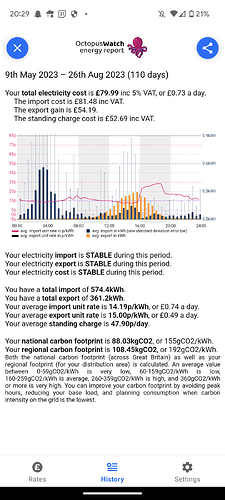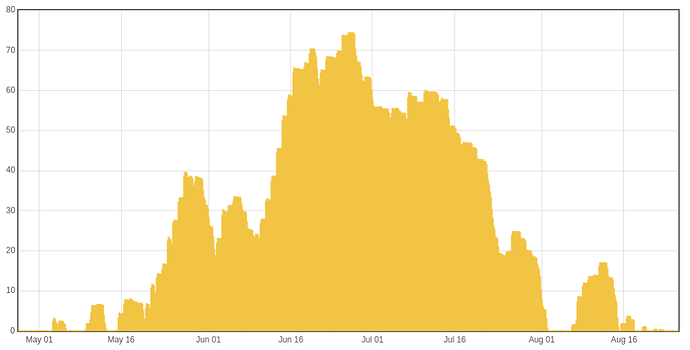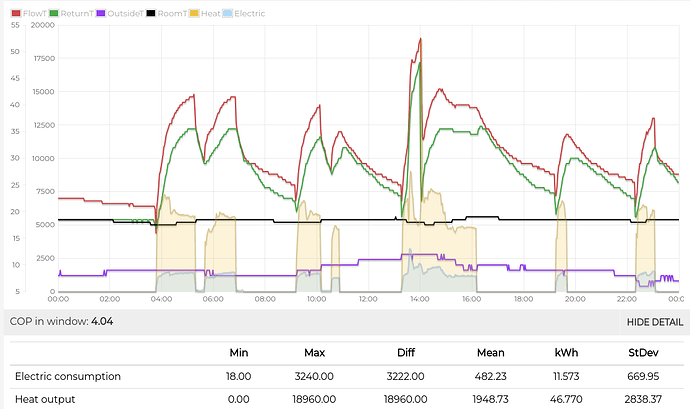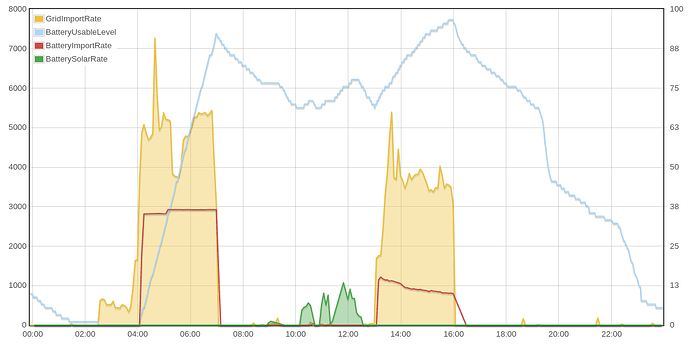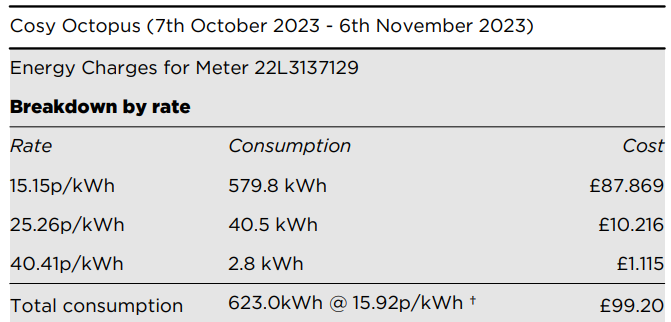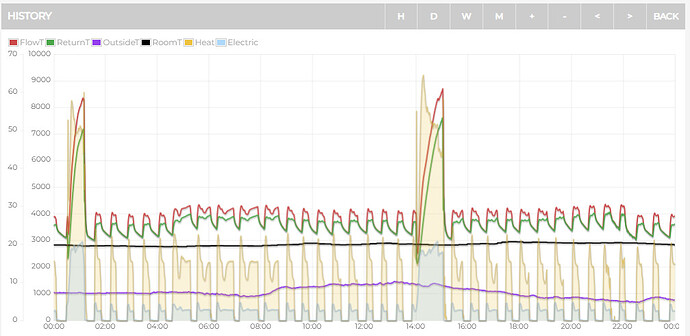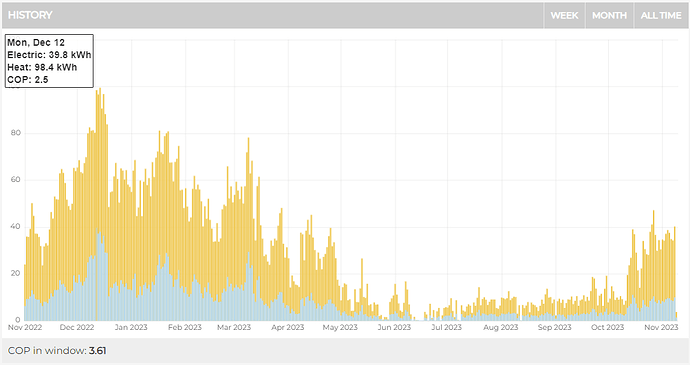I’ve been looking into which electricity tariff to switch to after my fixed one runs out next month, and so I’ve been doing detailed simulations using historical data from emoncms in various scenarios. I thought it might be useful to share my findings (with caveats).
Property: a 1950s bungalow with mediocre insulation, 11 kW heat pump, 5 kWp solar panels on east facing roof and 8.65 kWh of (usable) battery storage. No electric car. (I’ve not shown the effect of PV generation here)
Methodology: request hourly consumption for the past year, and simulate grid import and battery usage over time.
Tariff: Cosy Octopus provides two cheap periods between 4am - 7am, and 2pm - 5pm, and an expensive period 5pm to 8pm. Current rates for Yorkshire are 17.56p / 29.26p / 46.82p for cheap / main / peak periods. (Correct for August 2023, likely to be 2p lower in October)
I have plotted the total cost of 1 year’s worth of electricity, excluding standing charge and export:
Flexible Tariff: This is the cost to run my house, with heat pump, for one year, on the standard rate which is mostly dictated by Ofgem’s price cap - this is the benchmark by which all other scenarios are compared to. Ideally, I’d be looking for something that would be cheaper than this.
No Battery: Cost to run the house on Cosy Octopus, with no PV and no Battery, with consumption charged as whatever the rate is for hours of the day. This works out to be more expensive that the fixed rate would have been.
Demand Shift: This attempts to simulate shifting the consumption out of the peak period to when it’s cheaper. So, moving the heating periods to be earlier in the day, and heating the water in the cheap period. Simulation of demand shift is pretty crude, and I’m not entirely convinced it’s correct, however the impact seems to be small.
With Battery: This is where Cosy really starts to be economical. By filling the battery twice a day, we can avoid buying any electricity during the peak period. In fact, more than 75% of consumed electricity is charged at the cheap rate. Shifting heat pump into the cheaper period makes very little difference, as it mostly runs of the battery anyway.
Now, it could be that my simulations are way off, or my usage is atypical, but it’s hard to see how one could benefit from this tariff without the aid of a battery. Perhaps a newer or smaller property with better insulation would work out better, or where the heating is mostly off during the daytime. I’d be interested to hear from anyone else who’s on this tariff or is considering it.
Other observations:
- adding in the generated solar plus export brings this down massively, unsurprisingly
- having a bigger battery provides very little benefit, and isn’t an economical upgrade (for me)
- I ran the same simulation for Octopus Flux, and found it to be a poor choice for my setup
Obligatory referral link with £50 bonus just in case anyone’s looking to join Octopus.

